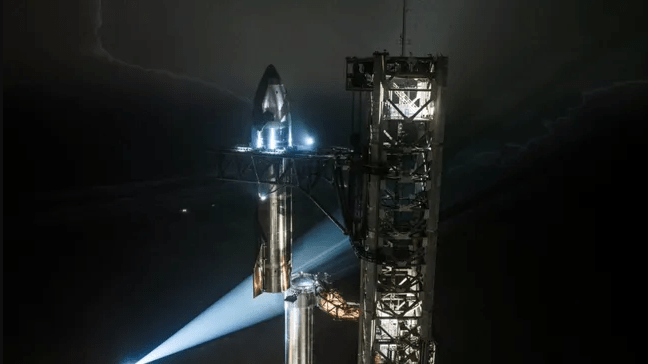SpaceX has assembled its next-generation Starship spacecraft for a high-stakes test flight, scheduled to launch on Jan. 13 from its Starbase facility in South Texas. The fully stacked Starship and its Super Heavy booster, standing at a towering 400 feet (122 meters), represent the world’s largest and most powerful rocket.
This mission, dubbed Flight 7, marks the seventh test of the Starship system and the first of up to 25 planned launches in 2025. With major upgrades incorporated into this flight, SpaceX aims to test new hardware, reusability features, and the rocket’s ability to deploy payloads during its 66-minute mission.
Key improvements for this test include updates to Starship’s flight computer, avionics, and heat shield. The spacecraft also features smaller, repositioned forward flaps designed to withstand less heat during atmospheric reentry. Notably, this mission will see the reuse of one of the 33 engines on the Super Heavy booster—a critical step toward achieving SpaceX’s goal of making Starship a fully reusable space transportation system.
The launch will also test Starship’s capability to deploy a simulated payload of Starlink internet satellites, a milestone for the rocket’s operational utility. The mission is further geared towards advancing SpaceX’s reusable rocket technology, with plans for the Super Heavy booster to either splash down in the Gulf of Mexico or return to the launch pad for a controlled catch by giant robotic arms known as “chopsticks.”
While SpaceX successfully demonstrated a rocket catch in a prior test, Flight 7’s booster recovery will only proceed if strict safety and performance criteria are met. If conditions aren’t optimal, the booster will default to a safe ocean landing.
This test comes as SpaceX continues its efforts to push the boundaries of reusable spaceflight. Starship is poised to play a pivotal role in NASA’s Artemis program, with plans to land astronauts on the moon in 2027. Beyond lunar missions, SpaceX founder Elon Musk envisions Starship as a vehicle for uncrewed missions to Mars as early as 2026, making this test a critical step in realizing that vision.













